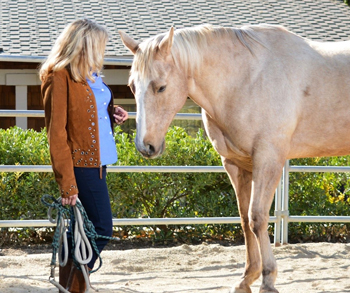Where is your office?
LifeWise Therapy27128 B Paseo EspadaSuite 621San Juan Capistrano, CA 92675
What are your hours?
I’m available Tuesday and Thursday, 12 – 7 PM, for face-to-face or teletherapy sessions in the office.
If requested, I can be available earlier or on Saturday.
How long are your sessions?
Do you take insurance?
How do I set up an appointment?
Phone or email is best for our initial appointment – just to make sure we make a winning team for your needs.
After our first contact/appointment, we will set up a time and day to meet. After that, you can get in touch with me or change your appointments by email or through the client portal.
What is your cancellation policy?
With whom do you work?
Why is your practice called LifeWise Therapy?
My friend Melina wanted to name my therapy practice “Calm” because I “bring calm to chaos.”
Instead, I chose LifeWise because wisdom is where emotion and logic overlap, and that’s what’s needed to make healthy life decisions.
What do you do in sessions with clients?
I begin sessions with a warm smile and a caring greeting. I’ll then solicit your input before delving into our session, as you may have something needing immediate attention. Conversely, you might wait until the end of a session to fill me in on something troublesome. I welcome this, but we may not address this new information until next time, and you might want it addressed now. I will do my best to accommodate. (If the session runs over, there might be additional charges.)
Meditation and breathwork are a great way to deepen the session, bringing you to a place where you can be vulnerable and honest. We want to create a safe space for your authentic voice.
I may use Socratic reasoning to unravel and understand your feelings, emotions, thoughts, beliefs, and body sensations. From there, you may learn new tools and techniques to practice or receive further education.
Take-home exercises, reading, or other media may be assigned.
Do your clients receive assignments between sessions?
I encourage completing assignments between sessions, but I’ll always honor your process, circumstances, and autonomy. Some clients hesitate to begin their process of change, while others dive headfirst into our work.
I encourage a gratitude journal and some form of daily breathwork or meditation for all my clients. I devote daily time to prayer and reading, as these “spiritual vitamins” sustain me as a therapist. Even though these practices are simple and free, they’re mind-bending. But, unfortunately, they are easily pushed aside, so accountability is key.
I am an avid reader and audible junkie, so I’ll commonly suggest reading materials or other media enhance our work. But, as I said, as for slowing you down or nudging you along, I’ll respect your circumstances.
We’ll be like co-captains on the same team. We’ll both be working for the win, and I’ll always be on your side!
What modalities do you use?
I use proven modalities that are well-researched and evidence-based. Here are some examples:
The first is Cognitive-Behavioral Therapy (CBT), which calls attention to your thoughts, emotions, and behaviors (actions).
I may also incorporate Dialectical Behavioral Therapy (DBT), similar to CBT with mindfulness and appeals to your higher power.
We may use Eye Movement Desensitization Reprocessing (EMDR), which opens memory networks for reprocessing, shifting paradigms to create a healthy integration of traumatic memories.
I have been captivated by the Hero’s Journey and the works of Abraham Maslow (pyramid of self) and Carl Jung (archetypes), which are useful for narrative therapy.
Attachment injuries (work by Bowlby and Ainsworth) affect our relationships with ourselves and others. How we behave, forgive, and make amends jeopardize our ability to have healthy relationships and self-esteem.
A Bowen family system perspective underlies my work with parents and families. Family members’ thoughts, feelings, and actions are entwined and react to the needs, expectations, and upsets. Behavioral modification also works to change unwanted behaviors within the parent-child relationship.
Finally, experiential therapies using art, nature, horses, and writing are always available to enhance our work and unlock deeper meaning that resonates with our struggles. If you’d like, we can hold session at the stables using equine-assisted therapy. We work alongside the horse to mirror aspects of your world without horseback riding.
What’s your professional training and experience?
My earliest training precluded my licensure as a Marriage and Family Therapist (MFT). As a teacher (of all ages and levels), I learned how to build empathy, acceptance, and trust with my students early on.
After leaving teaching, I decided to work at the Saddleback College Career Center in the Counseling Department. I was encouraged to earn a master’s degree in Counseling Psychology, and I pursued a path to licensure as an MFT as a route for opening my practice.
While in my master’s program, I interned at Abiding Savior Lutheran School, providing therapy to students from kindergarten to 12th grade. I also created a group for social skills and communication.
Once my degree was conferred, I began teaching and counseling college students of all ages in career, personal, and academic goals. I worked with veterans, athletes, career, re-entry, and an overall culturally diverse student population at the college.
I was later an MFT intern (associate) at Oceanfront Recovery, where I provided professional clinical care and treatment for clients with a wide variety of mental health, drug abuse, and/or alcohol-related disorders in an outpatient setting.
In time, I became trained and certified in equine therapy (EAGALA) and contracted as an equine specialist and mental health therapist. I worked with horses and teens to treat the underlying causes of destructive behavior at Newport Academy group homes.
Last year, I became certified in Eye Movement Desensitization and Reprocessing (EMDR). I’m very excited to use this much-researched, life-changing therapy to meet my clients’ needs related to trauma.
I continue to take courses, learn various modalities, and seek further certification to offer the best care to my clients.
How do you help people change?
With age comes weight, not just wisdom. Whenever I go for a checkup, I never face the scale. I say, “Don’t tell me.” The last time I went, the medical assistant looked at me and said, “You weigh more than last time,” and smiled with devilish delight.
Like I don’t know!
I see what is happening: the three B’s-boobs, butt, and belly are taking over. I’m getting older, and the old ways of eating are no longer working. I need to try something new. I’m now starting my mornings with warm water with apple cider vinegar and less fruit. I can’t give up my daily chocolate chip cookie and chocolate-dipped biscotti, so I reduced them to half. It’s a start.
What small thing can you do today to begin?
What else do I need to know to make the most out of working with you?
If we decide to work together, I will truly will your good. That means that I’ll become aware of how you work to motivate and empower you to reach your goals and meet your needs.
I am 100% committed to your care. We’ll explore methods, problem-solve, brainstorm together, and give you the tools you need to succeed.
Ultimately, using proven and experiential methods that suit your personality, values, and strengths, we’ll build a better, wiser, happier you!
Do you have any pets?
I seem to attract anxious animals (and people… I’m good with anxious clients).
 My 14-year-old mini-doxy, Rocky, is a rescue from a puppy mill. With no social skills and tremendous anxiety, he remains bound only to me and still barks (even after 14 years) at my husband when he comes home.
My 14-year-old mini-doxy, Rocky, is a rescue from a puppy mill. With no social skills and tremendous anxiety, he remains bound only to me and still barks (even after 14 years) at my husband when he comes home.
You might think Rocky is a well-trained service dog, but he’s not. If Rocky were a person, I would diagnose him with Generalized Anxiety Disorder (GAD) and Dependent Personality Disorder (DPD). We all need someone (just not the same someone ALL the time).
 For anyone who knows about “horsenalities,” it seems the horses I have ridden over the past 20 years have all been anxious right-brainers. It’s as if they are thinking, “I’m gonna die… I’m gonna die!” A right-brained horse will panic, spin out, back up, or freak out over any little thing.
For anyone who knows about “horsenalities,” it seems the horses I have ridden over the past 20 years have all been anxious right-brainers. It’s as if they are thinking, “I’m gonna die… I’m gonna die!” A right-brained horse will panic, spin out, back up, or freak out over any little thing.
I presently ride Rio (thanks to her momma, Gretchen V), a Carmarmelino (we made that up) due to the caramelizing of her aging Palomino coat. She needs reassurance and firmness to go through scary situations (“scary” might mean a sweatshirt hanging off a branch, a guy on the roof, or a murder of noisy crows).
 I also have rescue chickens. One is Crispy, the bantam hen. She’s dwarfed with crippled-looking feet, yet she faithfully lays a small egg a day. She might not look like much, but she is a producer and gives me a confident cluck every day.
I also have rescue chickens. One is Crispy, the bantam hen. She’s dwarfed with crippled-looking feet, yet she faithfully lays a small egg a day. She might not look like much, but she is a producer and gives me a confident cluck every day.
The other, Cocky, the Polish rooster, is twice as big as Crispy and doubly anxious. Beautifully resplendent, Cocky struts with attitude, cock-a-doodling like a pro. We recently adopted two young red hens with attitude, Jigsaw and Cockeyed, who just started laying blush-colored eggs. Yum.


